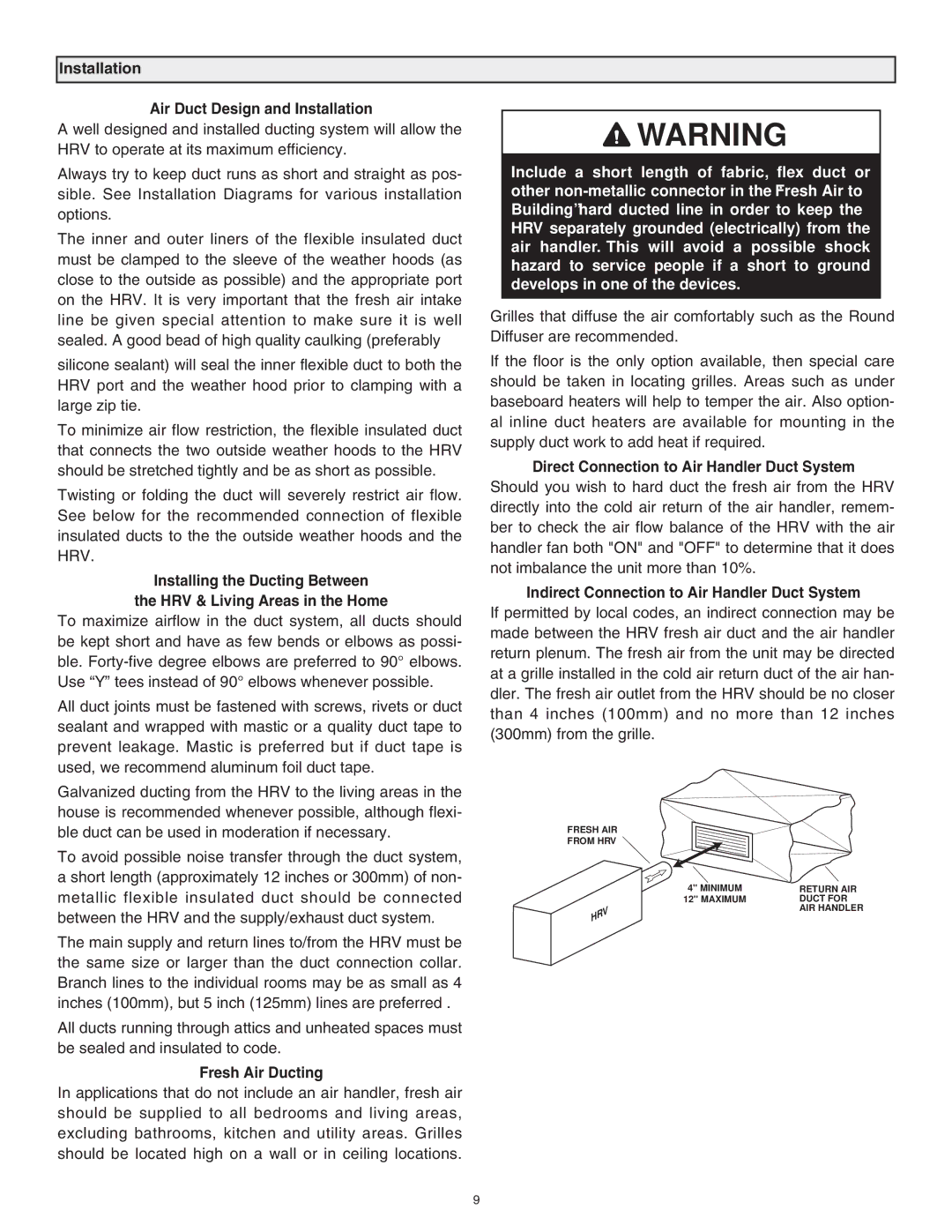120ERV, RNC120F specifications
The Lifebreath RNC120F,120ERV is a highly efficient energy recovery ventilator designed to promote better indoor air quality while minimizing energy consumption. This model is ideal for a variety of residential applications, providing a cost-effective solution for ensuring a continual supply of fresh outdoor air into living spaces. The RNC120F,120ERV features advanced technologies that allow it to operate efficiently, making it a favorable choice among homeowners and building professionals alike.One of the standout features of the RNC120F,120ERV is its energy recovery capability. This system can recover up to 85% of the energy from the outgoing stale air and transfer it to the incoming fresh air, which significantly reduces heating and cooling costs. This is particularly advantageous in regions with extreme seasonal climates, as it minimizes the demand on HVAC systems.
The unit is equipped with a high-efficiency ECM motor that operates quietly and consumes less energy compared to traditional motors. This technology not only contributes to lower energy bills but also ensures a more comfortable and peaceful indoor environment. The RNC120F,120ERV has adjustable airflow settings, allowing users to customize the level of ventilation according to their specific needs.
Another important characteristic of the Lifebreath RNC120F,120ERV is its compact design. It can easily be installed in tight spaces, making it suitable for a variety of home layouts and sizes. This versatility allows homeowners to benefit from improved air quality without sacrificing valuable living space.
The system also features a built-in filter that helps remove airborne particles, allergens, and pollutants, enhancing the overall air quality in the home. Regular maintenance and replacement of the filters are simple, ensuring that the unit continues to perform at its best.
In addition to its functional attributes, the RNC120F,120ERV is designed with durability in mind. It is constructed from high-quality materials that can withstand the rigors of continuous operation in various environments. Furthermore, the unit meets strict energy efficiency standards, making it a responsible choice for environmentally conscious consumers.
Overall, the Lifebreath RNC120F,120ERV combines energy efficiency, advanced technology, and ease of use, making it an excellent investment for anyone looking to improve their indoor air quality while keeping energy costs low.

